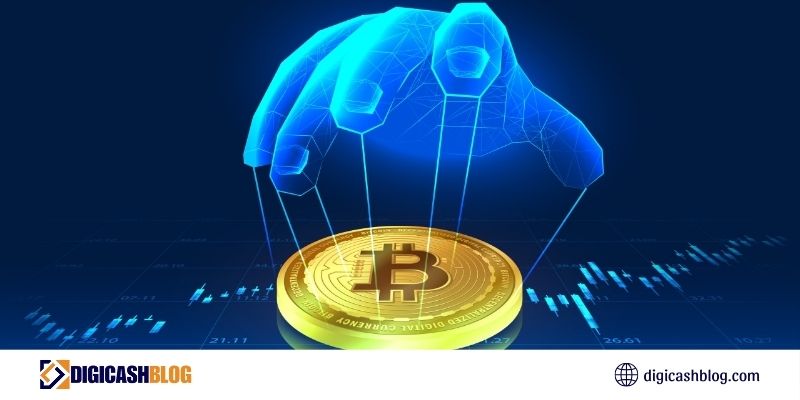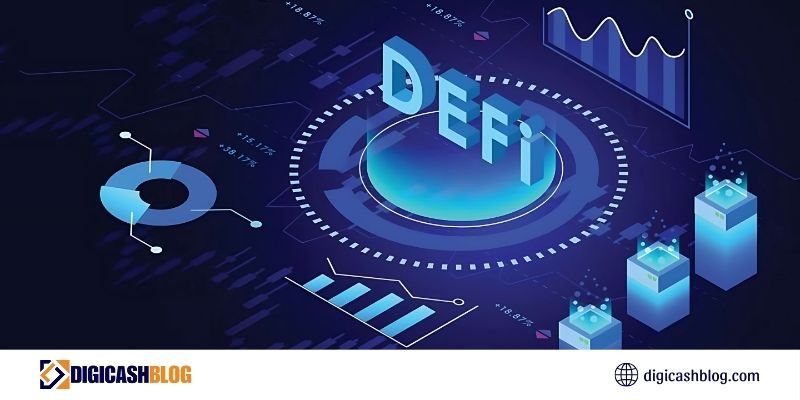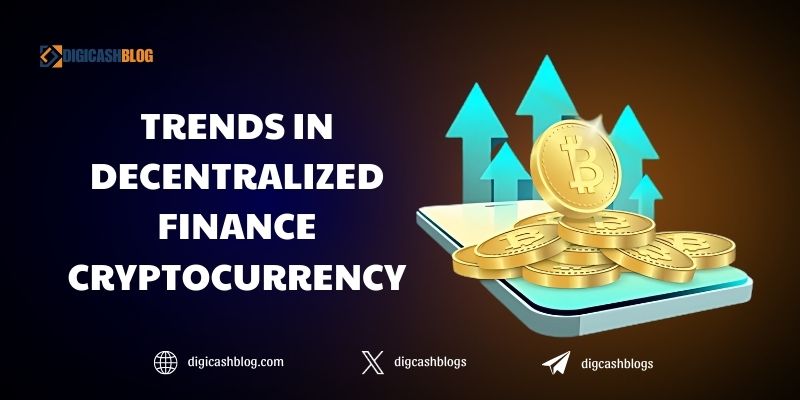The evolving landscape of blockchain technology has given rise to significant trends in decentralized finance cryptocurrency, transforming traditional financial systems. DeFi innovations are revolutionizing lending, borrowing, and asset management by eliminating intermediaries and enabling permissionless access to financial services. In this article, we will explore the key trends shaping the DeFi sector, including Layer 2 solutions, yield farming, and regulatory developments.
Decentralized Finance (DeFi) represents a shift away from centralized financial institutions, allowing individuals to access financial services through blockchain-based applications. With rapid technological advancements, the DeFi sector is experiencing new developments that redefine the financial ecosystem. These trends in decentralized finance cryptocurrency provide increased transparency, security, and financial inclusion, but they also come with challenges such as regulatory uncertainties and security risks. Understanding these trends is essential for anyone looking to navigate the evolving DeFi space.

Institutional Involvement in DeFi
Growing Interest from Institutional Investors
One of the most impactful trends in decentralized finance cryptocurrency is the increasing participation of institutional investors. Large financial firms are recognizing the potential of DeFi protocols to provide alternative investment opportunities and efficient capital allocation. Traditional financial institutions, such as hedge funds and venture capital firms, are entering the DeFi market to capitalize on high-yield opportunities.
DeFi Integration with Traditional Finance
Financial institutions are beginning to integrate DeFi solutions into their existing frameworks. The development of hybrid models that blend centralized and decentralized finance is driving broader adoption and regulatory acceptance. As banks and payment providers explore blockchain-based solutions, the integration of DeFi within traditional finance is becoming inevitable.
The adoption of DeFi by mainstream financial players is paving the way for innovative financial products, such as decentralized savings accounts and institutional lending platforms. These advancements illustrate the growing synergy between DeFi and conventional finance, creating a more inclusive financial ecosystem.
The Expansion of Layer 2 Scaling Solutions
Enhancing Transaction Efficiency
Layer 2 scaling solutions, such as Optimistic Rollups and zk-Rollups, are crucial trends in decentralized finance cryptocurrency that enhance network scalability. These solutions reduce congestion and lower transaction costs on blockchains like Ethereum, making DeFi applications more accessible.
Cross-Chain Interoperability
Interoperability between different blockchain networks is essential for DeFi growth. Cross-chain solutions like Polkadot and Cosmos facilitate seamless asset transfers, improving liquidity and user experience. By enabling various blockchains to interact, cross-chain technology allows DeFi protocols to reach a broader audience and create a more interconnected financial ecosystem.

The Rise of Yield Farming and Liquidity Mining
Incentivizing Participation
Yield farming has become a fundamental trend in decentralized finance cryptocurrency, allowing users to earn passive income by providing liquidity to DeFi protocols. Liquidity mining further incentivizes participation by rewarding users with governance tokens.
Risks and Sustainability Concerns
Despite its popularity, yield farming presents risks such as impermanent loss and smart contract vulnerabilities. Developers are working on more sustainable models to ensure long-term viability. Many projects are shifting toward innovative reward mechanisms that prioritize sustainability and user security.
Regulatory Developments and Compliance
Stricter DeFi Regulations
Governments and regulatory bodies are closely monitoring trends in decentralized finance cryptocurrency to implement compliance measures. Regulatory clarity is essential for institutional adoption and investor protection.
The Future of DeFi Compliance
The emergence of Know Your Customer (KYC) and Anti-Money Laundering (AML) protocols in DeFi platforms is shaping the regulatory landscape. Balancing decentralization with compliance remains a key challenge for the industry. As regulations evolve, DeFi projects will need to adapt to new compliance requirements to ensure legitimacy and mass adoption.

The Role of Stablecoins in DeFi
Stablecoins as a Medium of Exchange
Stablecoins, such as USDT and USDC, play a pivotal role in trends in decentralized finance cryptocurrency by providing price stability. These digital assets facilitate trading, lending, and cross-border transactions.
Algorithmic Stablecoins and Their Evolution
Algorithmic stablecoins, which adjust supply dynamically, are gaining traction. However, challenges like maintaining stability and avoiding de-pegging issues need to be addressed. As stablecoins become more prevalent, their regulatory scrutiny is also increasing.
The Future of DeFi and Financial Inclusion
DeFi as a Tool for Financial Inclusion
DeFi is expanding financial access to underserved populations. By removing barriers to entry, DeFi enables users worldwide to access loans, investments, and banking services without traditional intermediaries. This trend is particularly impactful in developing regions, where many individuals lack access to basic financial services.
Innovations Shaping the Future of DeFi
Emerging technologies such as AI-driven trading bots and decentralized identity verification are set to drive the next phase of DeFi innovation, ensuring more secure and efficient financial services. As these technologies mature, DeFi platforms will become more user-friendly and accessible to a broader demographic.

The Evolution of Governance in DeFi Protocols
The Role of Decentralized Autonomous Organizations (DAOs)
Decentralized Autonomous Organizations (DAOs) are at the core of DeFi governance. These organizations enable token holders to participate in decision-making processes, ensuring a fair and decentralized financial ecosystem.
Governance Challenges and Solutions
Despite their benefits, DAOs face governance challenges, such as voter apathy and centralization of voting power. Developers are exploring new governance models to enhance participation and decentralization, ensuring that DeFi remains true to its core principles.
The dynamic nature of trends in decentralized finance cryptocurrency is reshaping global financial ecosystems. From institutional involvement and Layer 2 solutions to yield farming and regulatory compliance, DeFi continues to revolutionize financial accessibility and efficiency. As the industry matures, the integration of sustainable models and regulatory frameworks will further solidify DeFi’s role in the financial sector.
As blockchain technology continues to evolve, the future of DeFi looks promising, with increased adoption, improved security measures, and greater financial inclusion. Staying informed about these trends in decentralized finance cryptocurrency is essential for anyone looking to engage with the rapidly growing DeFi space.
Stay updated with the latest DeFi trends and insights by following Digicash Blog—your trusted source for cryptocurrency and blockchain developments!

